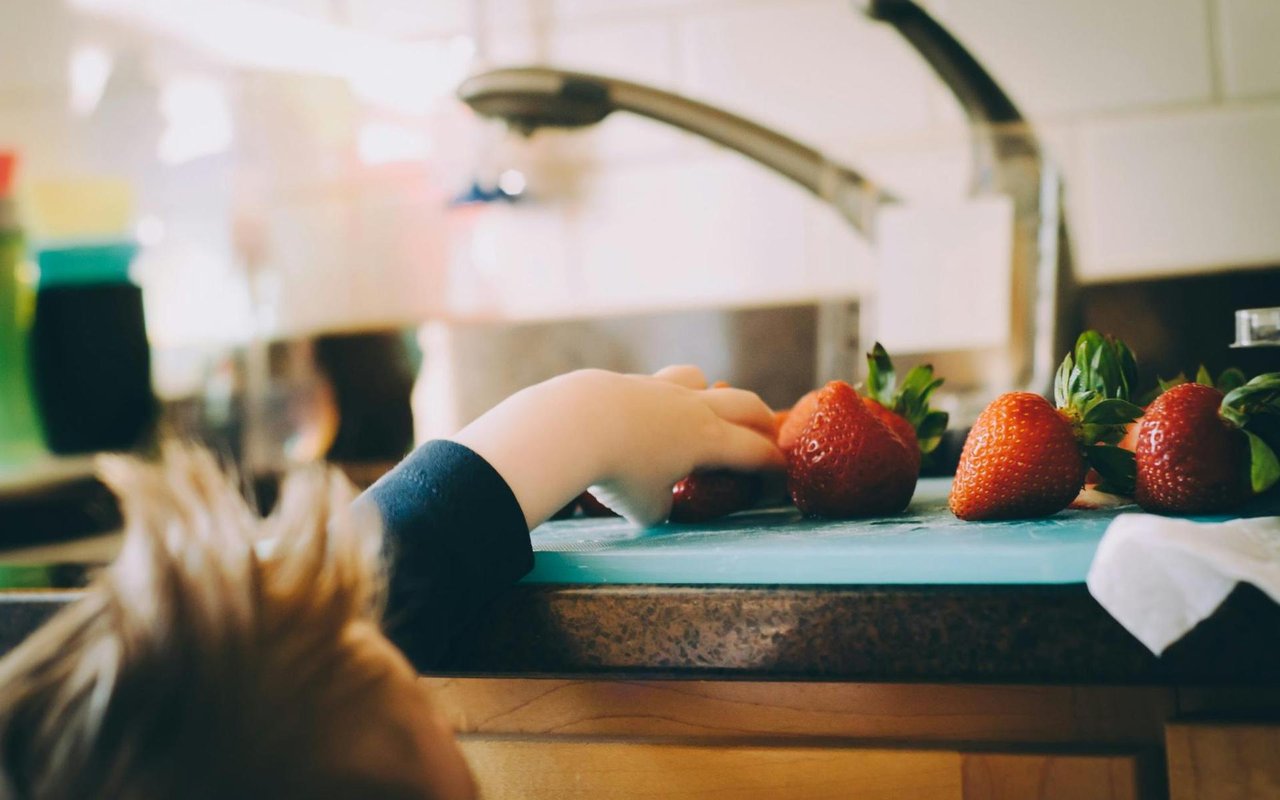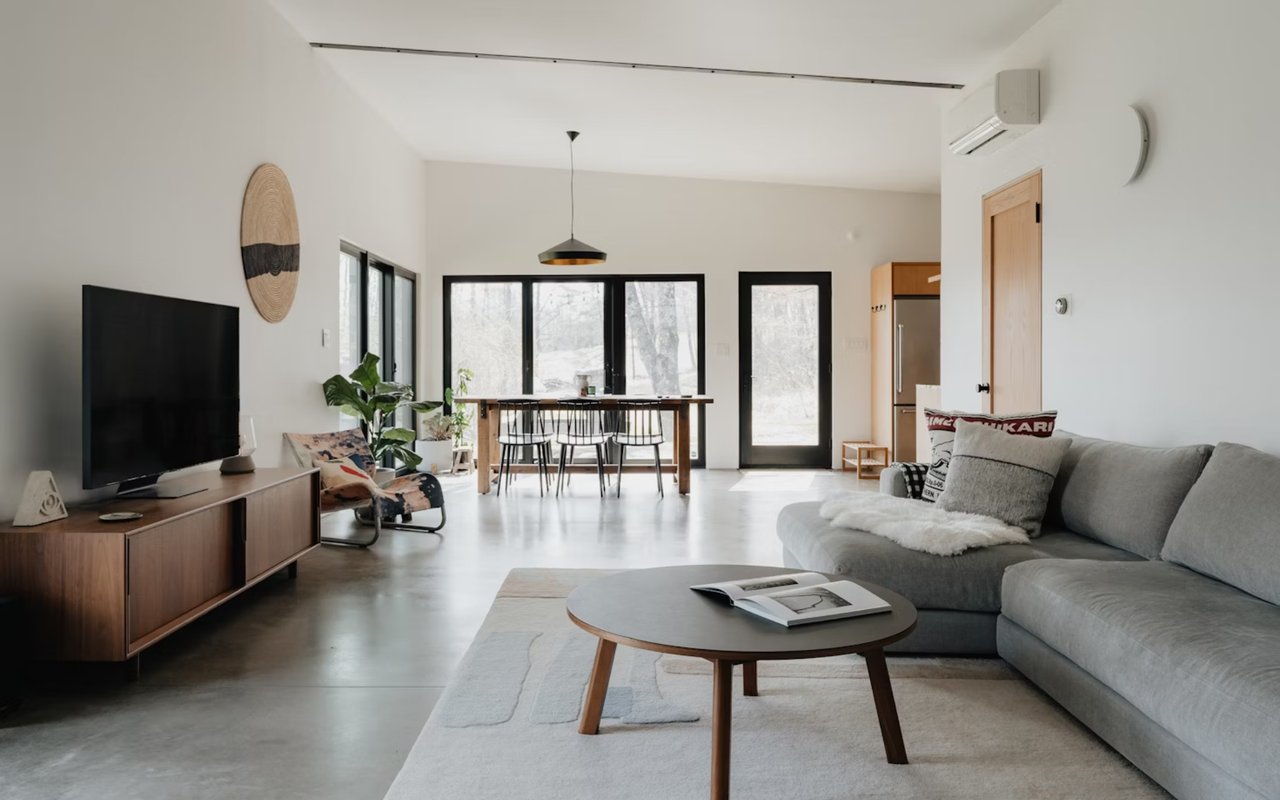You want your home to feel welcoming, comfortable, and free of hidden hazards. The challenge is that kids move quickly, explore everything, and routinely find the one thing you forgot to lock, anchor, or move out of reach. The good news is that with a structured plan, clear priorities, and a recurring checklist, you can dramatically cut everyday risks down and worry less.
This guide will walk you through the process of what to check and which upgrades deliver the biggest return in peace of mind. Think of this as an ongoing home tune-up focused on the little ones who matter most.
Start With A Whole-Home Hazard Audit
Begin with a deliberate walkthrough at your child’s eye level. Get on the floor and look for cords, sharp corners, unstable furniture, dangling blinds, loose baby gates, accessible cleaning materials, or coins and batteries on low shelves. You will notice small, easy-to-miss items that feel invisible from adult height. Take photos or notes as you go. You can turn these into a punch list you can actually finish.
Finish your audit by prioritizing the highest-impact fixes: anchoring heavy furniture, installing outlet covers where they are missing, securing window cords, adding cabinet locks where you store chemicals or medicine, and adjusting your water heater to a kid-safe temperature (typically 120°F or below).
Finish your audit by prioritizing the highest-impact fixes: anchoring heavy furniture, installing outlet covers where they are missing, securing window cords, adding cabinet locks where you store chemicals or medicine, and adjusting your water heater to a kid-safe temperature (typically 120°F or below).
Childproof The Kitchen
The kitchen is full of heat, sharp objects, and chemicals. Start by moving chemicals, detergents, and pods to an upper cabinet with a child lock. If you cannot relocate them, invest in sturdy, tamper-resistant cabinet latches. Keep knives in a locked drawer or a high-mounted magnetic strip that children cannot reach. Store small magnets, button batteries, and vitamins out of sight and out of reach.
Create a dedicated “kid-safe” drawer or bin with cups, plates, and snacks you are happy to let them access independently. This gives kids a sense of agency while keeping them out of drawers with peelers, scissors, and foil cutters. Add stove knob covers, use the back burners whenever possible, and turn the pot handles inward. A stove guard can create a simple barrier that buys you the seconds you need when a curious hand reaches up.
Create a dedicated “kid-safe” drawer or bin with cups, plates, and snacks you are happy to let them access independently. This gives kids a sense of agency while keeping them out of drawers with peelers, scissors, and foil cutters. Add stove knob covers, use the back burners whenever possible, and turn the pot handles inward. A stove guard can create a simple barrier that buys you the seconds you need when a curious hand reaches up.
Make Bathrooms Childproof And Dry
Bathrooms combine water, medications, and slippery floors. Lock all medication cabinets, including vitamins and supplements. Transfer pills and liquids to their original, child-resistant containers if you have decanted them into easy-pour jars. Check that hair dryers, curling irons, and electric razors are unplugged and stored in a high cabinet after every use.
Reduce burn risk by installing anti-scald devices on faucets and showerheads. Add non-slip mats inside and outside the tub so that wet feet do not meet slick tile, and keep toilet lids latched when you have toddlers in the house.
Reduce burn risk by installing anti-scald devices on faucets and showerheads. Add non-slip mats inside and outside the tub so that wet feet do not meet slick tile, and keep toilet lids latched when you have toddlers in the house.
Living Room And Common Areas: Anchors, Cords, And Corners
Tip-overs are a major hazard. Anchor every dresser, bookshelf, and TV to a stud. It takes only a few minutes and can prevent catastrophic injuries. For TVs, a low, sturdy stand plus a wall strap provides dual protection. Avoid placing tempting items, such as remotes or toys, on top of tall furniture that might encourage climbing.
Look next at the cords. Use cordless blinds or cut and secure blind cords with tension devices. Bundle and route power cords through cord covers, and attach them to the wall so that little hands cannot tug on them. For sharp furniture edges, install corner guards. Choose clear options that blend in and do not peel easily.
Look next at the cords. Use cordless blinds or cut and secure blind cords with tension devices. Bundle and route power cords through cord covers, and attach them to the wall so that little hands cannot tug on them. For sharp furniture edges, install corner guards. Choose clear options that blend in and do not peel easily.
Stairs, Windows, And Balconies: Barriers And Hardware
Stairs need well-fitted, hardware-mounted gates at the top and bottom when you have crawlers or early walkers. Pressure-mounted options can slip, especially at the top of the stairs. Check the gate screws every month, and tighten them whenever they wiggle even a millimeter. Make sure that the baluster spacing on railings is narrow enough that a child’s head cannot pass through. If it is too wide, temporary guard kits can bridge the gap.
For windows, install window guards or stops that limit how far they can open. Remember that screens keep bugs out, but they do not prevent falls. Move furniture away from the windows so kids cannot climb and gain leverage. On balconies, ensure vertical slats are close enough together to prevent a child from slipping through, and never store climbable items, such as planters or stools, near the railing.
For windows, install window guards or stops that limit how far they can open. Remember that screens keep bugs out, but they do not prevent falls. Move furniture away from the windows so kids cannot climb and gain leverage. On balconies, ensure vertical slats are close enough together to prevent a child from slipping through, and never store climbable items, such as planters or stools, near the railing.
Electrical, Heat, And Fire Risks: Detectors, Cords, And Appliances
Install smoke and carbon monoxide detectors on every level of your home and outside sleeping areas. Test them monthly. Replace batteries on a set schedule, even if you do not hear the low-battery chirp. If your detectors are more than 10 years old (or the CO detector is more than 5–7 years old, depending on the model), replace them entirely.
Cover every accessible outlet. Use automatic sliding covers that spring back into place when you unplug something. Replace damaged cords immediately. Space heaters, fireplaces, and radiators deserve extra attention. Add a sturdy barrier, keep a wide clearance zone, and confirm controls are challenging for children to reach. If you have a gas range, install a stove tip bracket and consider an automatic gas shutoff device for extra protection.
Cover every accessible outlet. Use automatic sliding covers that spring back into place when you unplug something. Replace damaged cords immediately. Space heaters, fireplaces, and radiators deserve extra attention. Add a sturdy barrier, keep a wide clearance zone, and confirm controls are challenging for children to reach. If you have a gas range, install a stove tip bracket and consider an automatic gas shutoff device for extra protection.
Water, Pools, And Outdoor Spaces
If you have a pool or spa, you need multiple layers of protection. Install a four-sided fence that separates the pool from the house, incorporate a self-closing, self-latching gate, and add door and gate alarms that alert you when anyone enters the pool area. Keep rescue equipment, such as a life ring and a reaching pole, close to the water.
In the yard, lock sheds and garages. Put lawn tools, pesticides, and gasoline on high shelves with childproof locks. Secure trampolines with enclosures, inspect zipper entries regularly, and cap any exposed springs. On playsets, check the hardware every season, and add fresh impact-absorbing mulch.
In the yard, lock sheds and garages. Put lawn tools, pesticides, and gasoline on high shelves with childproof locks. Secure trampolines with enclosures, inspect zipper entries regularly, and cap any exposed springs. On playsets, check the hardware every season, and add fresh impact-absorbing mulch.
Emergency Readiness Kids Can Understand
Create a simple, memorable emergency plan. Practice how to get out of the house in case of an emergency, where to meet, and who to call. Keep it short, repeat it regularly, and use language your child genuinely understands. Put emergency contacts on the fridge and in your phone favorites, and show older kids how to access them. Post your address near the main phone so that a child can read it to a dispatcher.
Stock a first-aid kit on every level of your home. Include child-appropriate medications with dosing syringes or cups, bandages in multiple sizes, and instant cold packs. Keep one kit in your car as well. Review expiration dates twice a year, ideally when you test detectors or change the HVAC filters. The rhythm helps you remember.
Stock a first-aid kit on every level of your home. Include child-appropriate medications with dosing syringes or cups, bandages in multiple sizes, and instant cold packs. Keep one kit in your car as well. Review expiration dates twice a year, ideally when you test detectors or change the HVAC filters. The rhythm helps you remember.
Make Risk Reduction A Habit, Not A Project
Your home will never be completely hazard-free, and that is okay. What matters is a mindset of continual improvement and thoughtful upgrades. You are creating a home that adapts as your child grows, with layers of protection and well-practiced plans. That is how you cut down on everyday risks, reduce stress, and give your kids the freedom to explore with confidence.
If you’re ready to find the perfect home for the whole crew in Los Altos and throughout Silicon Valley, reach out to The Campi Group today.
If you’re ready to find the perfect home for the whole crew in Los Altos and throughout Silicon Valley, reach out to The Campi Group today.



